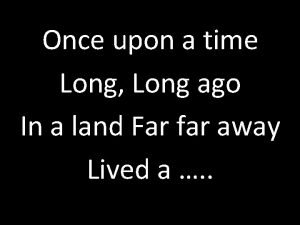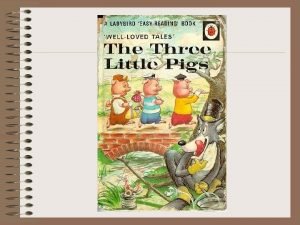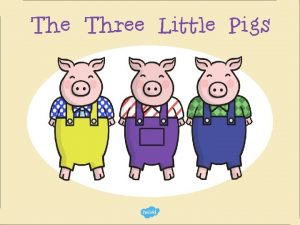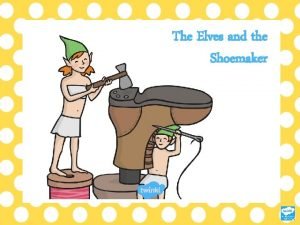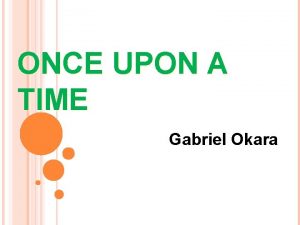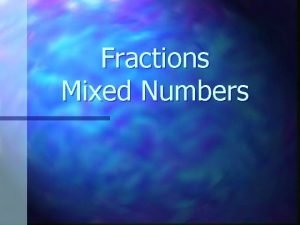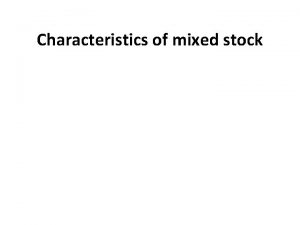Year 2 Once Upon a Mixed Up Time




- Slides: 4

Year 2: Once Upon a Mixed Up Time NC – links - Literacy Wow: Pupils to perform their own ‘Once Upon a Mixed Up Tale’. (Possible ‘pantomime’ visit) WOW: Pantomime Performance LC 1 What do you know about once upon a time? LC 2 Was the big, bad wolf a good guy after all? LC 3 Did the wolf’s huff and puff really blow the house down? LC 4 Were Cinderella’s stepsisters really that ugly? LC 5 What ingredients do you need to mix up a tale? LC 6 Can you bring your puppet to life? LC 7 Are you ready for show time? Honestly, Red Riding Hood was Rotten, Trisha Speed Shaskan Forest Academy Literacy Link: Pupils to read and retell traditional tales and write descriptions. Pupils to read and compare traditional tales to modern versions, write diaries and letters as characters and write their own versions of traditional tales – changing key parts. Pupils to write, edit, improve and perform their own ‘Once Upon a Mixed Up Tale’. Pupils to write instructions for designing and making puppets for storytelling. Creative Art Link: Pupils to design and make puppets for storytelling. Pupils to sing and play percussion instruments for their performance of ‘Once Upon a Mixed Up Tale’. The Three Little Wolves and the Big Bad Pig Eugene Trivisas Seriously, Cinderella is So Annoying Trisha Speed Shaskan 1

Year 2: Once Upon a Mixed Up Tale Year : 2 Literacy DT Composition • Discuss ideas for the content of writing. • Plan the content of writing and write down ideas. • Write down or annotate plan with key language and vocabulary. • Formulate sentences which express their ideas for writing. • Orally rehearse structured sentences or sequences of sentences. • Write fictional narratives. • Write for different purposes. • Evaluate writing independently and/or with teacher. • Evaluate writing with peers. • Make improvements to writing after evaluation. • Re-read to check that writing makes sense. • Re-read to check that verbs indicating time are used correctly and consistently, including verbs in the continuous form. • Proof-read to check for errors in spelling, grammar and punctuation. • Read aloud own writing with appropriate intonation to make the meaning clear. Vocabulary, Punctuation and Grammar • Use full stops, capital letters , exclamation and question marks accurately to demarcate sentences. • Punctuate sentences using commas for lists. • Punctuate sentences using apostrophes to mark contractions. • Punctuate sentences using apostrophes to mark singular possession. • Use a capital letter for names of people, places, the days of the week, and the personal pronoun ‘I’. Develop Sentence Construction • Use different forms: statement, question, exclamation, command. • Use expanded noun phrases to describe and specify, e. g. the blue butterfly • Use present and past tenses correctly and consistently including the progressive form. • Use subordination (using when, if, that, or because)and co-ordination (using or, and, or but). • Understand begin to use some features of written Standard English. Use the Terminology Verb, tense – past and present, adjective, noun phrase, suffix, apostrophe, comma, compound, statement, question, exclamation, command. • Understand the terminology. • Use the terminology to talk about own writing. DT • Can they think of ideas and plan what to do next? • Can they choose the best tools and materials? • Can they give a reason why these are best? • Can they describe their design by using pictures, diagrams, models and words? • Can they join things (materials/ components) together in different ways? • What went well with their work? • If they did it again, what would they want to improve? Textiles • Can they measure textile? • Can they join textiles together to make something? • Can they cut textiles? • Can they explain why they chose a certain textile? Music • • • Do they sing and follow the melody (tune)? Do they sing accurately at a given pitch? Can they perform simple patterns and accompaniments keeping a steady pulse? Can they perform with others? Can they play simple rhythmic patterns on an instrument? Can they sing/clap a pulse increasing or decreasing in tempo? Year 1 (Challenging) Sequence a short story. Start a narrative by introducing a character. Organise writing so that the purpose is clear. Use adverbs to start sentences. For example – Slowly…, Carefully…, Fortunately… Use pronouns to avoid repetition. Make sentences longer and use words other than ‘and’ and ‘then’ to join ideas together. Use new vocabulary for the first time and be excited about experimenting with new vocabulary. Know which letters sit below the line and which are tall letters. Consistent in use of small case and capital letters Sound out spelling when not sure and come up with phonetically plausible attempts at spelling unfamiliar words Spell almost all words in the Year 1 and 2 list accurately Forest Academy 2

Year 2: Once Upon a Mixed Up Tale LC 1: What do you know about once upon a time? LC 2: Was the big, bad wolf a good guy after all? In this learning challenge pupils will: • read traditional tales: ‘Little Red Riding Hood’; ‘The Three Little Pigs’; ‘Cinderella’ • read modern versions of ‘Little Red Riding Hood’ and compare to traditional tale • plan and write character descriptions: Wolf; Pigs; Ugly Stepsisters • plan and write diaries from different characters perspectives • plan and write retellings of traditional tales • plan and write their own version of ‘Little Red Riding Hood’ – changing key parts (setting; characters; events) LC 3: Did the wolf’s huff and puff really blow the house down? LC 4: Were Cinderella’s stepsisters really that ugly? In this learning challenge pupils will: • read modern versions of ‘The Three Little Pigs’ and compare to traditional tale • read modern versions of ‘Cinderella’ and compare to traditional tale • plan and write letters from different characters perspectives: Wolf and Pigs • make hand puppets to represent the characters • write instructions for making hand puppets • plan and write their own version of ‘The Three Little Pigs’ – changing key parts (setting; characters; events) • perform modern retelling of ‘Cinderella’ using hand puppets and film using ipads Forest Academy 3

Year 2: Once Upon a Mixed Up Tale LC 5: What ingredients do you need to mix up a tale? LC 6: Are you ready for show-time? In this learning challenge pupils will: • plan and write their own traditional tale – mixed up – changing key parts (characters; setting; events) • perform their own traditional tale – mixed up • evaluate, edit and improve their own mixed up tale focussing on spelling, punctuation and grammar • sing songs – following the melody and singing at the correct pitch • play percussion instruments to add musical accompaniment to different scenes in mixed up tale LC 6 Reflection: Pantomime Performance Perform pantomime to parents/school Forest Academy 4
